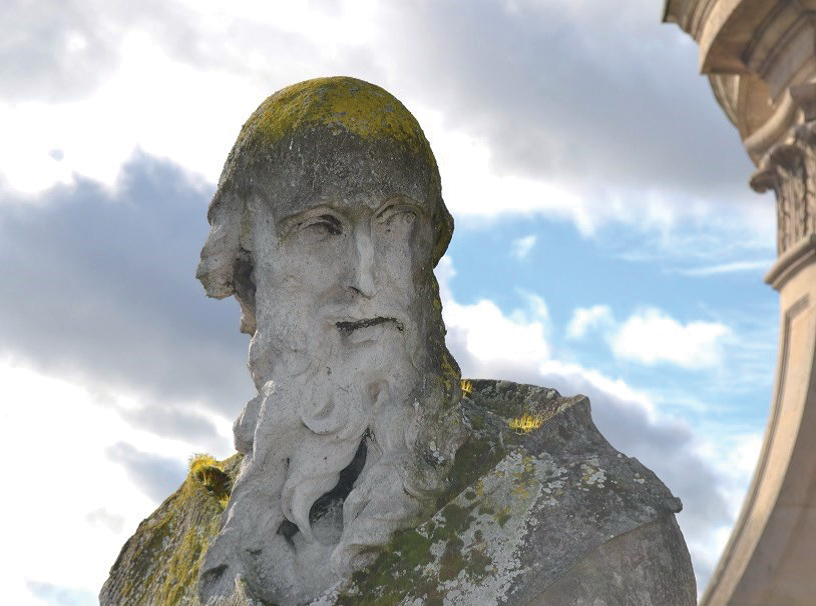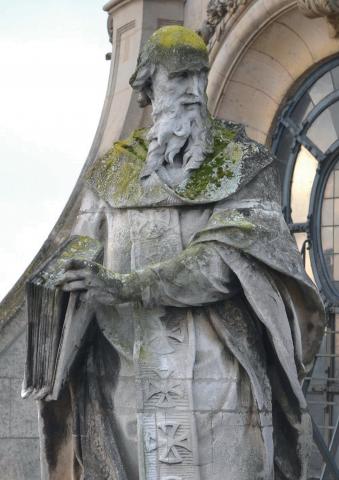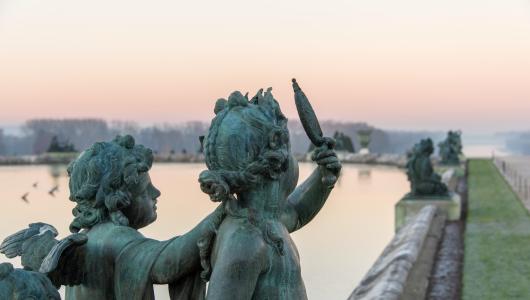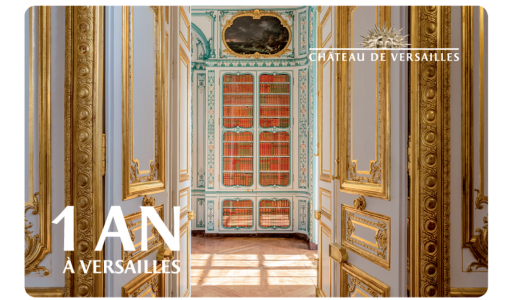Saint Basil
One of the fathers of the Greek Church, Saint Basil is represented as an elderly man, bald and with a long, curly beard. He is dressed as a bishop, wearing a tunic, chasuble and a stole draped over his shoulder in the manner of the Eastern church. In his right hand, he is holding a book which is held partially open with his left. Born in around 330 to a noble family, saint Basil received a solid Christian upbringing. After spending several years as a hermit in the Palestinian desert, he became bishop of Caesarea in 370. His episcopacy was notable for the defence of Orthodoxy against Arianism, opposition to political power and concern for the well-being of the people in his charge. He was the main legislator of the eastern monastic movement, and left a considerable body of ideological and theological work. He died in 379.

Saint Basil - detail
© EPV/Thomas Garnier
THE SCULPTOR JEAN POULTIER
Received at the Royal Academy in 1684, most of his career as a sculptor was spent in the king’s service. His first commission at Versailles was the Water Parterre, for which he supplied the model for one of the eight groups of children destined for the corners of the two pools. He also sculpted a marble vase and the statue of Dido for the Royal Way and the Term of Ceres for Latona's Parterre. He created several reliefs for the interior of the Chapel, including one of an angel holding a chandelier, located above one of the western doors of the gallery, and the spandrel relief depicting the Prayer in the Garden of Gethsemane. His refined, dynamic style is powerful and elegant and makes Jean Poultier one of the sculptors who is most representative of Versailles art.






